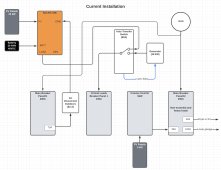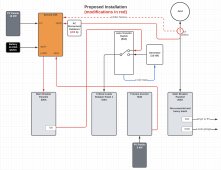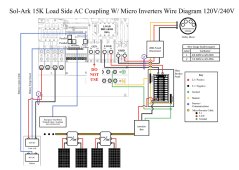Idratherski
New Member
- Joined
- Apr 19, 2021
- Messages
- 7
Hi,
I am looking for recommendations on Sol-Ark 15K installation configuration for my situation.
My starting configuration and goals are:

My installer configured the system as shown here:

I am not certain this is the best configuration for my situation because I am not able to enable “Limit to Home” mode because the CT sensors are not installed. Also, the Fronius 5kW is not available when the grid is down and I am not able to load Panel #1 when the grid is down.
To improve this, I am thinking that it should be configured as shown below. What do the experts here think? How would you configure this to best achieve my goals?

Thanks for any help,
Mark
I am looking for recommendations on Sol-Ark 15K installation configuration for my situation.
My starting configuration and goals are:

My installer configured the system as shown here:

I am not certain this is the best configuration for my situation because I am not able to enable “Limit to Home” mode because the CT sensors are not installed. Also, the Fronius 5kW is not available when the grid is down and I am not able to load Panel #1 when the grid is down.
To improve this, I am thinking that it should be configured as shown below. What do the experts here think? How would you configure this to best achieve my goals?

Thanks for any help,
Mark



